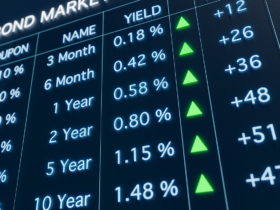Home prices not only declined in July but they also saw the biggest one-month drop in 11 years, according to the Black Knight Mortgage Monitor report.
- Y-O-Y: The Home price annual growth rate fell 2.5 percentage points in July to 14.5%, surpassing June as the fastest single-month deceleration in more than 40 years – and is now down 4.9 pp over the two months combined.
- M-O-M: Home prices fell 0.77% in July, this was the largest single-month decline in home prices since January 2011, and the second-largest July decline on record.
Some are worse than others. Nationally, home prices were only off their peak levels by less than 1% some markets have seen much more significant declines.
- San Jose, Calif., has seen the most significant pullback, with the average home price now down 10% in three months with Seattle, the only city NOT in California, was number two with a 7.7% drop followed by San Francisco (-7.4%), San Diego (-5.6%), and Los Angeles (-4.3%).
- For historical perspective, in the early 1990s, it took 2.5 years, on average, for markets to shed 10% of their value and during the Great Recession it took two years.
SHOCKER: While the West contains all the markets with the biggest losses, the South continues to mostly hold all the big gainers with southeastern markets now accounting for eight of the 10 top spots in terms of home price growth rates.
All about that equity. Thanks to the skyrocketing home prices these last two years the equity levels remain at historical highs even with these price declines. However, it is important to remember that home price declines have twice the impact on tappable equity levels. This means a 5% decline in home values nationally would equate to a 10% decline in tappable equity, and so on.
- Total tappable equity was down 5% over the past two months, suggesting a sizeable reduction is likely in Q3, which would mark the first quarterly decline in three years.
- Remember that the second quarter posted the lowest quarter-end negative equity rate on record, with fewer than half of one percent of all mortgage holders owing more than their home’s current market value.
Lagging data. Ben Graboske, Black Knight Data & Analytics President, said most housing data lags which can be misleading and can mask rapid movements in the market. “In January, prices rose at 28 times their normal monthly rate before slowing to five times average in February as interest rates began to tick up. Even May was still about two times normal, before June growth came in 70% below the long-run average. And all the while, annual appreciation continued to appear historically strong, showing double-digit growth month after month. Without timely, granular data, market-moving trends don’t become apparent until they’re right in front of you – like a sudden shift to the largest single-month decline in home prices in more than a decade.”






Got a Questions?
Find us on Socials or Contact us and we’ll get back to you as soon as possible.